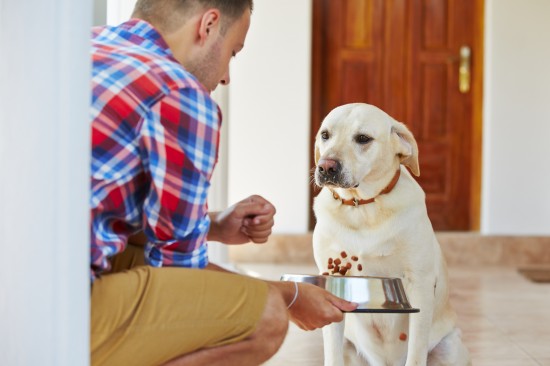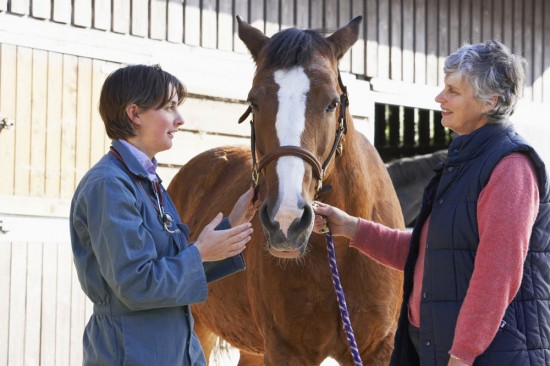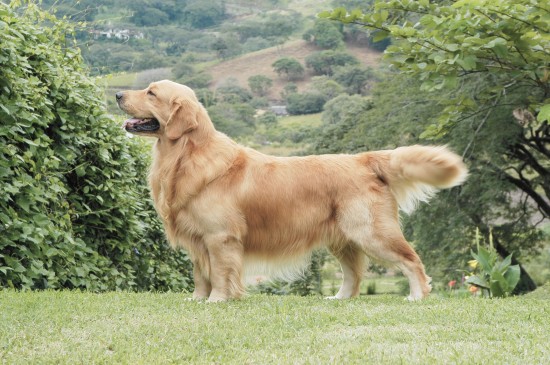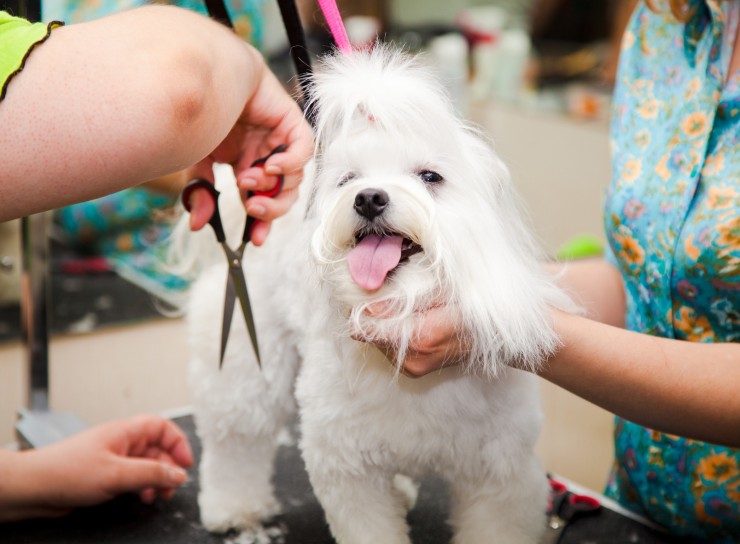

It is always a concern when a dog fails to eat. There may be a dramatic change in appetite; e.g. a dog that has always eaten enthusiastically going off his food completely, or a gradual decline in interest towards a particular type of food. In any case, this is not a problem that can be ignored. It is vital that your dog eats enough to provide the energy and nutrients that are essential for his health and vitality. As owners, we also like to see our dogs enjoying their food, as this is an important part of the daily routine from which our pets should gain pleasure. Do seek veterinary advice if your dog has become inappetant so that medical causes can be ruled out.
If your dog has developed a little routine of disruption at mealtimes which has become "normal behaviour" for him; then in order to break this routine, it helps to be a bit sneaky! Try feeding him at completely random times and in different rooms; even outside if the weather's nice enough. If there is another person who can take over the feeding then this can be especially helpful. The current behaviour may be learned and reinforced by the familiarity of the routine, so little things to upset it can often get things back on track.
Dogs are sensitive creatures and they can become stressed for various reasons and this can impact on their appetite. They can also pick up on their owners’ moods, so if you are stressed about feeding, this can impact on their behaviour at mealtimes. Try to keep calm. Look at other reasons why dogs can become stressed. Is there competition from other pets in the household at mealtimes? Is a tag making a distracting noise banging on a metal bowl? Are plastic bowls holding unpleasant tasting residue from detergents? Are hormonal changes a possibility? Have there been any unsettling environmental changes (e.g. storms, a new baby, a move of house)?
One of the most effective ways to beat stress is to play. Interactive feeding toys can be very effective in encouraging an inappetant dog to eat. This provides a novel vessel for the food which can be effective if the dog is not keen on his regular bowl, and it will also help in breaking a habit of leaving food if it is triggered by familiar stimuli (of which the usual bowl might be one of them).
Your dog may have learnt that if he refuses to eat he will get more attention and fuss from you. You can combat this by ignoring him when he is not eating (around meal time) and giving attention (calmly) only when he is eating. To ignore your dog successfully you will need to avoid eye contact or facing him, and refrain from talking to or touching him. Remember to ignore him from the moment he stops eating.
Your dog should then soon associate eating with attention and start to enjoy his food once again. This can sometimes be difficult, so another option would be to leave the room when your dog is eating. Close the door so that he can’t follow you from the room, and busy yourself elsewhere in the house for a few minutes. Reward your dog with plenty of praise if he is eating when you return to the room. Small frequent feeds and activity feeding toys help to provide stimulation for the attention seeker. An increase in exercise can also help as this will mean your dog is more likely to be hungry.
Too much variety can make fussiness worse, but sometimes a little flexibility is required. In cases of serious inappetance, an effective method can be to revert to a food that is known to be enjoyed for a few days. This could be a brand of wet food or some healthy home-prepared food. Taking the food which isn’t being enjoyed out of the equation for a little while is another good way to limit stress, and when mealtimes are happy times once more, you can then very gradually start reintroducing the product of your choice and reducing the amount of the dog’s preferred food. The key thing is to start slowly and mix any wet and dry food sufficiently well to prevent a clever dog from differentiating and selecting one type of food to eat and leaving the other. It is usually sensible to soak kibble for about half an hour prior to servings for this reason. Soaking will soften it and allow you to get the feeds properly combined, and it will also enhance the aroma of a dry product. This gentle approach may also be used for dogs who are inappetant as a result of illness (do ensure the food is appropriate for the condition).
If feeding commercial dry food, ensure that the diet is suitable for the age group and activity level of your pet and that the kibble size is appropriate. Concentrated products with a higher calorie content can be useful for the discerning eater because the smaller volumes required may be more acceptable to a dog with a low appetite. Dogs who are not particularly food orientated may find large meals off-putting.
Make sure all members of the family/household are aware of the problem and that they are willing to work with you. You may be trying very hard to resolve the appetite issues yourself, but if other people are sneaking in unscheduled meals or treats then it will undermine all you are trying to achieve.
It is often helpful to establish several smaller meal times throughout the day rather than one or two bigger meals (but do not increase the amount of food normally given). An inappetant dog is more likely to eat up most or all of a small meal than he is a large one. You will need to train yourself to pick up any uneaten food within about 30 minutes of it being given to the dog. Some schools of thought suggest 15 minutes is sufficient, but not all dogs eat at the same rate. Some do like to eat a little, go off and do something else and then return to the bowl a little later. Knowing that the next meal is not too far away is reassuring for an owner, and should minimise the temptation to offer something else instead if the food isn’t eaten.
Whilst dogs with normal digestions and a healthy appetite can eat a variety of foods with no problems, the more choice that you give to a fussy eater, the worse the problem can become. It is hard, but a few days spent being strict (with yourself more than the dog!) will pay off very quickly. We often attribute human traits to our animals. The reality is that dogs have few taste buds compared to people and they don’t tend to chew or savour their food the same as we do as our dentition is very different.
One of the most common behavioural causes of inappetence in dogs is a simple case of the dog not being hungry. Additions to the main diet such as treats, titbits, training rewards and recreational chews can all contribute a considerable amount of calories if you add them together. One key way to help encourage a dog to eat his main meals is to eliminate all extras from his diet, and also reduce his main food allowance a little for a few days to give him back an “edge” of hunger. This may sound very strict but it is one of the most effective methods to help the discerning dog back on track at mealtimes. Review his feeding allowance and exercise routine. You may find that a little more than required has been given which could explain a reduction in appetite. A natural decline in appetite can often be quite normal in adolescent dogs, because as puppies get older and their growth rate slows down, the demand for those extra calories needed for healthy development starts to wane off. Adult dogs have lower metabolic energy requirements than puppies, and this is why adult feeding volume are lower. Sometimes a reduction is the solution (providing the dog is not already underweight).
 Getting A Horse Or Pony Vetted Prior To Purchase
Getting A Horse O
Getting A Horse Or Pony Vetted Prior To Purchase
Getting A Horse O
 Health Conditions Commonly Seen In The Alapaha Blue Blood Bulldog
Health Conditions
Health Conditions Commonly Seen In The Alapaha Blue Blood Bulldog
Health Conditions
 How To Find & Choose The Best Stud Dog
How To Find & Cho
How To Find & Choose The Best Stud Dog
How To Find & Cho
 All About The Cockapoo
All About The Coc
All About The Cockapoo
All About The Coc
 Grooming And Coat Care For The Maltese
Grooming And Coat
Grooming And Coat Care For The Maltese
Grooming And Coat
Copyright © 2005-2016 Pet Information All Rights Reserved
Contact us: www162date@outlook.com